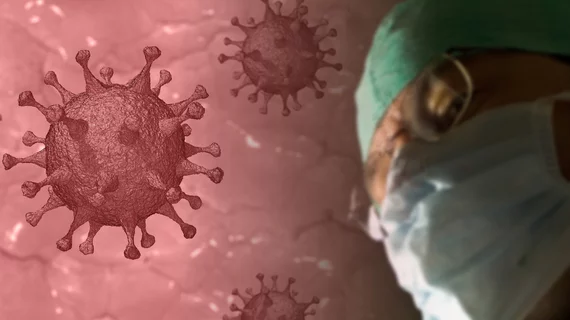Health groups adapted quickly to reinstate cancer imaging following pandemic-driven free fall
While many sounded the alarm after early pandemic restrictions led to dramatic drops in cancer imaging, organizations were actually quick on their feet to resume screening patients, according to an analysis shared on March 19.
Insurance claims from more than 6 million privately covered Americans revealed steep declines in imaging during March and April of last year, with mammography and colorectal cancer screening rates dropping by about 96% each.
When July rolled around, however, both exam rates rebounded to higher levels than before the pandemic, nonprofit research group RAND Corp. reported in the Journal of General Internal Medicine.
And while this wasn’t enough to fully recover to pre-pandemic levels, the findings show that health systems worked remarkably well at shifting resources and protocols to deliver lifesaving services.
"These are the first findings to show that, despite real fears about the consequences of drop-off in cancer screens, health facilities figured out how to pick this back up after the initial pandemic restrictions," lead author Ryan McBain, a policy researcher at RAND, said in a statement.
A number of investigations have quantified the devastating impact of early COVID-19 lockdowns on cancer screening. Massachusetts General Brigham, for example, tallied nearly 50,000 fewer tests during the three-month peak compared to the three months prior. And this drop may have missed some 1,400 cancers. Others have found such imaging is currently on the rebound, but noted disruptions could drag into 2022.
Wanting to learn more about this trend, researchers looked at over 6.8 million insurance claims from Jan. 15 to July 31, 2020. Health benefits manager Castlight Health provided the data, which covered adults ages 45 to 64.
In April of last year, median weekly mammograms fell to 6.9 women per 10,000 beneficiaries compared to 87.8 per 10,000 before the U.S. declared a state of national emergency on March 13. By the end of the study period in July, that rate bounced back up to 88.2 screenings per 10,000 women.
Similarly, colonoscopies declined from 15.1 per 10,000 to 0.9 in April 2020, a 95% free fall. Those figures rebounded to 12.6 per 10,000 patients by July 31.
Despite this positive silver lining, one Castlight expert says there’s plenty more work to be done.
"While it is reassuring to see cancer screening rates begin to return to pre-pandemic levels, we have to ensure that people who deferred preventive services are prioritized to get their screening in a timely manner, especially if they are at higher risk of disease," Dena M. Bravata, chief medical officer of the San Francisco-based organization, said Monday.

